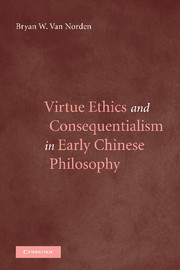Appendix: Some Alternative Views
Published online by Cambridge University Press: 25 July 2009
Summary
MORE ON TRUTH
The Problem in Brief
Chad Hansen presents what he takes to be the Indo-European view on truth, belief, and proof:
The model of knowing was representing accurately through mental contents – true beliefs. The mental items arrange themselves into beliefs – mental compositions or sentences of mentalese. These mental constructions (thoughts) picture possible physical configurations of objects. Beliefs are true if the pictures are accurate, false if they are not.
Syllogistic logic and the proof model of reasoning bolster this mental semantic theory…. Truth is the semantic value of sentences and therefore of beliefs.
This cluster of concepts in semantics, logic, psychology, and moral theory work together. These are not random, isolated notions, but part of the central conceptual structure of both Western and Indian philosophy…. To attribute one of these ideas to a philosophical culture is to attribute the network of ideas to them.
This contrasts sharply with the early Chinese view of language, in which we find an
absence of compositional units corresponding to sentences. Chinese thinkers did not distinguish sentential units as an intermediate structure [between words and a “guiding discourse”]. Thus they did not focus on truth conditions. Similarly, their philosophy of mind did not include the theory of beliefs (sentences in mentalese). And their moral theory did not focus on rules (universal prescriptive sentences).
- Type
- Chapter
- Information
- Virtue Ethics and Consequentialism in Early Chinese Philosophy , pp. 361 - 380Publisher: Cambridge University PressPrint publication year: 2007



